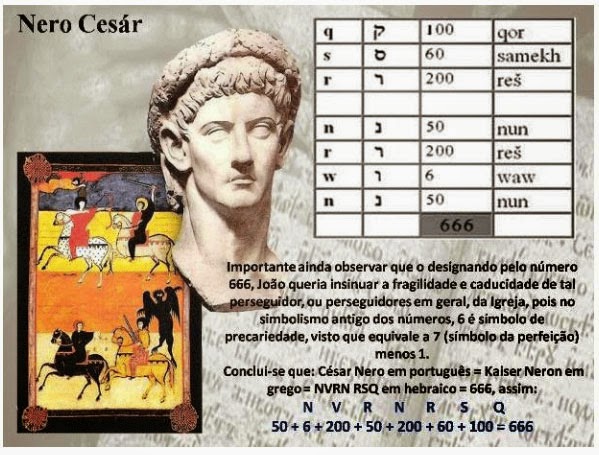


Moreover, the presence in some ancient manuscripts of a variation in which 666 is rendered 616 lends further credence to Nero as the intended referent. This ancient numerical cryptogram reflected the widespread knowledge that Nero had killed his own mother.įinally, while Nero in Greek gematria totaled 1,005, the reader of John’s letter familiar with the Hebrew language could recognize that the Greek spelling of “Nero Caesar” (Greek: Νέρων Καίσαρ, English transliteration: Neron Kaisaros) transliterated into Hebrew (נרון קסר) equals 666.

This numerical equality ( isopsephism) is encapsulated in the phrase: “Count the numerical values of the letters in Nero’s name, and in ‘murdered his own mother’ and you will find their sum is the same.” In Greek, the numerical value of the letters in Nero’s name(Greek: Νέρων, English transliteration: Neron) totaled 1,005, as did the numbers in the phrase murdered his own mother. For example, in the Lives of the Twelve Caesars, Roman historian Suetonius identified Nero by a numerical designation equal to a nefarious deed. It would have been cruel and dangerously misleading for John to suggest to first-century Christians that they could identify the Beast if, in fact, the Beast was a twenty-first-century individual or institution.įurthermore, unlike today, transforming names into numbers ( gematria) was common in antiquity. Obviously no amount of wisdom and insight would have enabled a first-century audience to calculate the number of a twenty- first-century beast. Placing the Beast in the twenty-first century, however, may well pose insurmountable difficulties.įirst, the apostle John, author of Revelation, told a first- century audience that with “wisdom” and “insight” they would be able to “calculate the number of the beast, for it is man’s number.

Multitudes today assume that 666 is a number rep- resenting a modern-day beast that is about to be revealed.


 0 kommentar(er)
0 kommentar(er)
